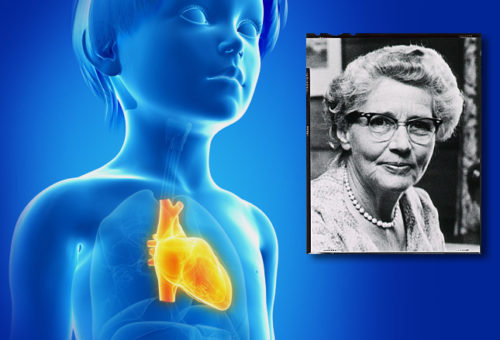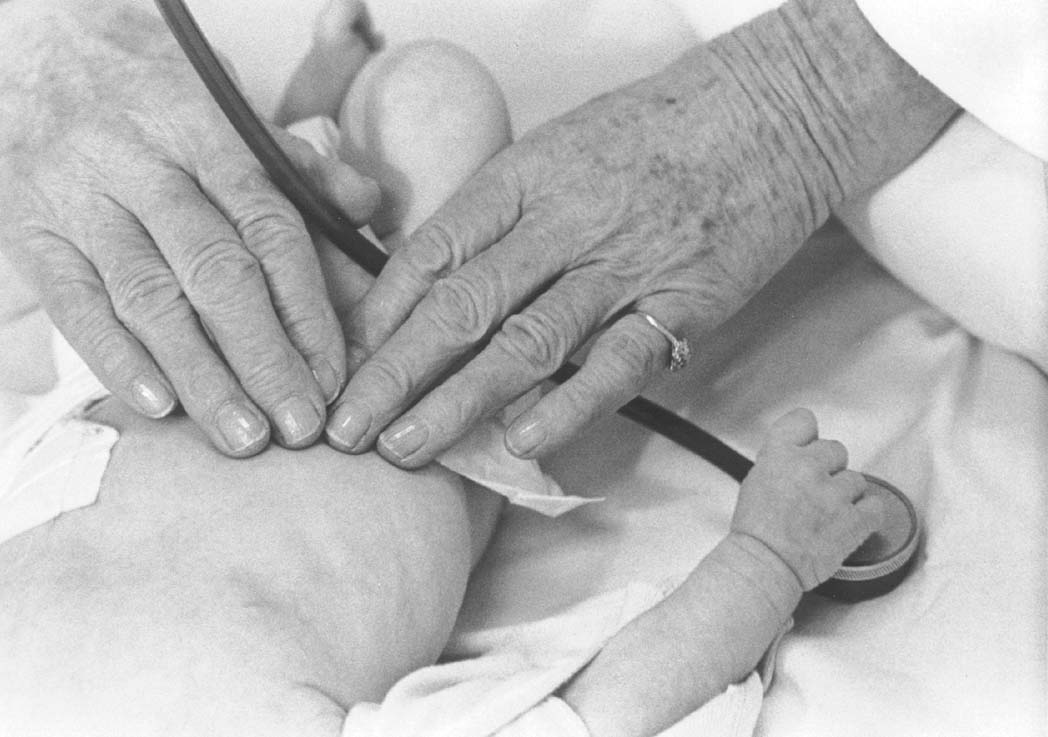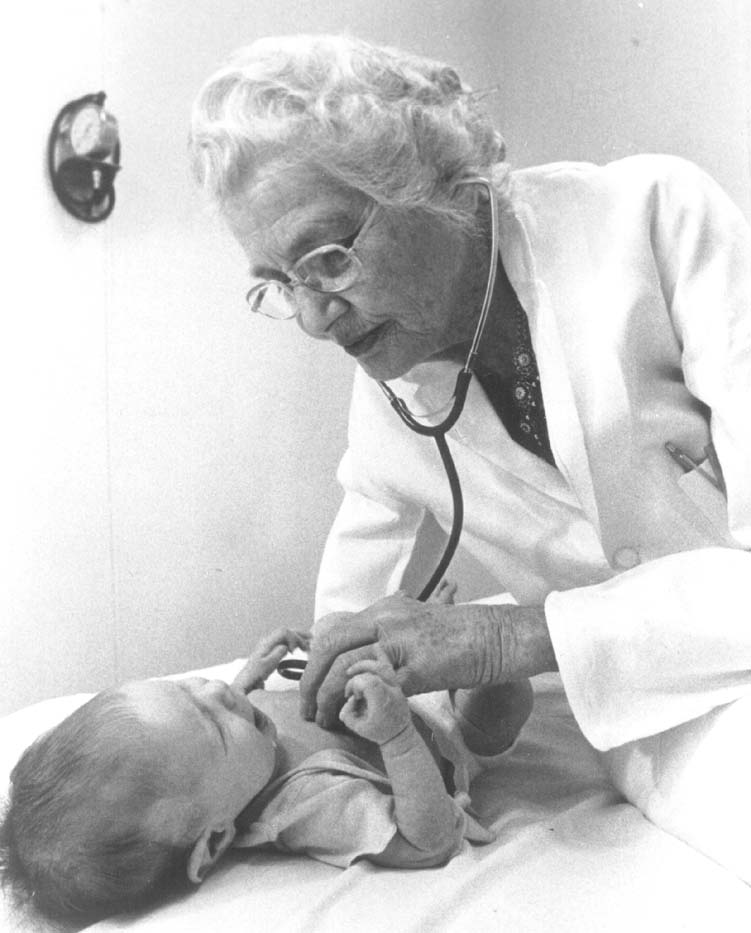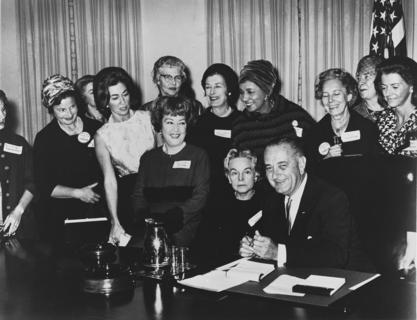Doctor Helen Brooke Taussig – World Renowned Cardiologist
Like others in this series of the 50 top physicians of all time, Helen Brooke Taussig is known by every Cardiologist in the world… most Pediatricians too.
You too would do well to get to know of her, if only to grasp a better understanding on how to care for your own children.
Helen Taussig, renowned cardiologist and blue-baby expert
Thousands of people still alive today owe their very lives to this fine lady and her UN-stoppable spirit which stood up to the arrogant bigotry of Harvard University and became a doctor anyway!
Until Dr. Taussig, the hundreds of babies born each year with the “Blue Baby Syndrome” were deemed “un-savable” and eventually died. Tetralogy of Fallot, as it is named, is a fairly common congenital heart disease where the “backwards” circulation, used by the baby before birth to bypass its inactive lungs, still persists after birth.
Even today it’s the most common cause of cyanotic heart disease. Dr. Taussig, though not a surgeon, came up with a palliative surgical procedure which allowed those doomed babies to live into adulthood. But then she had to convince a surgeon it would work and to try it – and give him top billing for the “Blaylock-Taussig” shunt. [It’s now called the Blaylock-Taussig-Thomas shunt to give credit to the technician who helped].
Helen Taussig (1898-1986) – #48
Awarded, Authored, Discriminated, Overcomer, Dyslexic, Deaf, Teacher, Compassionate… Life-long Learner
If the above sub-titles aren’t enough, Dr. Taussig is also called: Revered, Celebrated, a Cardiologist and a winner of the Medal of Honor and Presidential Medal of Freedom!
The Child
Helen was born, the youngest of four children, in Cambridge, Massachusetts to well educated parents: Frank Taussig, a Harvard Professor and Edith Guild, a “founding student” at Radcliffe (where Harvard had all its women students go). Her grandfather, William Taussig, was a physician who worked with blind children and had a school named for him.
Contracting whopping cough left her with a significant hearing loss; which, with her dyslexia, had teachers regarding her as retarded. Her father however recognized his daughters logical mind and tutored her to read, write, spell and do the numbers that her teachers didn’t.
A natural biologist, her mother contracted tuberculosis and died when Helen was only 11. Between her sheer determination, her father’s tutelage and her grandfathers encouragement and example she developed the skills necessary to graduate from the Cambridge School for Girls and not only enter but excel at Radcliffe following in her late mothers footsteps.
She became a champion tennis player at Radcliff but eventually wanted a chance to be on her own so transferred to the University of California at Berkeley where, again, she not only graduated selected for Phi Beta Kappa but began being noticed for her excellence.
The Doctor
Helen returned home really wanting to be a doctor but having obstacles all around her in the form of academic snobbery and down-right bigotry. Seeing her anguish, her father encouraged her to enter the field of public health because Harvard wouldn’t accept women into their medical degree program.
She did try to enter the Harvard School of Public Health but the dean told her she could take courses BUT “you cannot earn a degree here.” She replied “Who wants to study for four years and get no degree at all for that work?” and the arrogant snob smirked “Nobody, I hope.”
She entered Boston University Medical School which wasn’t much different. She was made to sit isolated in the far back corner of lecture halls and view slides in a separate room. In histology she was completely barred from even speaking to her male classmates “for fear of contamination.”
After two years of quietly excelling, an anatomy professor at Boston couldn’t ignore her superior mind any longer and suggested that she focus on the heart and transfer to the medical school at Johns Hopkins. She did, and the rest, as they say “Is history.” She graduated with honors in 1927.
After living a life full of loss and discrimination, her life began to change with yet another disappointment – after a year as a fellow in cardiology, the internship in her selected field of medicine had already been given to a classmate. So, she made one of the most monumental decisions of her life (and for all of us) by accepting an internship in PEDIATRICS!
The excellence she exhibited all her life was finally recognized and rewarded at Johns Hopkins. By 1930 she was appointed assistant professor, by ’31 the the physician-in-charge of the pediatric clinic of the Harriet Lane Home and by ’46 and associate professor pediatrics. She was with Johns Hopkins for 60 years.
All this despite beginning to go deaf at age 31 and needing an amplified stethoscope by 35. In this she discovered the ability to diagnose heart problems through her fingertips! By actually feeling the tiny vibrations made by the different valves in the heart during its beat cycle and noticing the differences in many childhood conditions.
The Researcher/Teacher
Although her new institution was more forward-thinking than Harvard, many of her new colleagues were not. Despite her undergraduate research and many publications on the heart, her fellow doctors were hesitant to refer their patients to a female. But they were happy to refer all their “blue-babies” to her because nothing could be done for them.
Helen by nature was an innovator against handicaps and problems. She pioneered the use of fluoroscopic x-rays to examine hearts and discovered that “blue-babies” died when their heart’s circulation made its change from inside the womb to outside – rarely making it into childhood.
Seemingly the only doctor to “own” the problem, she innovated from the fledglingly-simple surgeries then being performed on infants into a bypass-shunt which she was convinced would save her babies. It took another two years of work to show/convince the chief surgeon Alfred Blalock enough that he would attempt it on a dying infant – it worked! Literally the dawn of pediatric surgery.
The procedure was improved, it made national press and both she and Blalock traveled to teach the procedure to others. Literally thousands of distraught parents brought their children to Johns Hopkins to see Helen, now recognized as the “first lady of cardiology” in the world and soon as the “founder” of pediatric cardiology.
The “doomed” infants of 1947 were now enabled to live to see the new millennium over 60 years later!
She published a prolific number of papers and wrote the definitive text, Congenital Malformations of the Heart, in 1947 (revised in 1960). The AAP chose 5 others to help her establish the sub-board of “Pediatric Cardiology.”
One of her former students, who had dubbed themselves “the Loyal Knights of Taussig” for her kind but demanding tutelage, informed her of numerous birth defects in Europe and she traveled on her own to investigate.
She then authored her findings in JAMA and testified before congress which almost single-handedly persuaded the FDA to ban the sale of the sedative Thalidomide in the United States. Those of us in the US have her to thank for making the phocomelia side-effect largely only a European issue.
The Person
Dr. Taussig was, in the vernacular of today, a “gentle giant.” Pediatric medical students were proud to accept tutelage from this kind but demanding teacher.
Eventually, perhaps too little too late, the world did recognize her humble excellence and priceless contribution to medicine. France, Italy and eventually the US bestowed their highest civilian honors. In the US it was the Presidential Medal of Freedom from President Johnson.
Unfortunately the school she devoted her life to, Johns Hopkins, wasn’t so forthcoming. She was an “instructor” for 16 years, associate for 13 and only granted professorship 4 years before retirement. This for a person who probably did the most for their financial success and notoriety than any other, past or present.
She was the kind of person that makes the best physician – caring, innovative, responsible, stalwart and long, very long-suffering. She never “really” retired – lecturing, performing research in cardiology and writing articles right up to her untimely accidental death at age 88. Of her more than 100 publications, forty of them were after retirement.
Four days short of her 88th birthday, Helen was driving a group of friends to vote in a local election when her car collided with another vehicle at an intersection. She died an hour later in the hospital.
A film, Something the Lord Made, was made of her life’s story where she was portrayed by Mary Stuart Masterson.
I truly would liked to have known Dr. Taussig. And, strangely enough, would have liked to at least met and spoken with the Harvard dean and histology professor who worried about the “contamination” of their students. What were they thinking?
Fellows, your poor entitled “boys” should be so lucky for even half such “contamination”…
Biographic Summary
Helen Brooke Taussig was a self-determined and tolerant woman physician trained in a prejudiced and discriminative environment who went on to be recognized as “the first lady of cardiology” because of her saving work with “blue-babies”; she pioneered the specialty of Pediatric Cardiology; and, nearly single-handedly prevented the US from the European catastrophe that was Thalidomide.
Born: May 24, 1898, in Cambridge, Mass.
Died: May 20, 1986
Education: Radcliff, University of California at Berkeley, John Hopkins School of Medicine (Harvard and Boston College, audited without credit)
Known for: Major advances in pediatric cardiology, invention of the “Blalock-Taussig” shunt for “Blue-babies,” investigating and preventing the birth-defects of Thalidomide in the US, and as a caring and kind teacher.
Books: Congenital Malformations of the Heart, in 1947; Over 100 published articles, many after her retirement
Parents: Frank and Edith Guild Taussig
Helen Brooke Taussig – Awards and Honors
- Chevalier (knight) of the Legion d’Honneur, 1947 (like her father)
- First female recipient of the Passano Foundation Award for an outstanding contribution to medical science (with Blalock), 1948
- Honored by Hobart College as one of twelve female physicians who contributed “to the glory of their profession,” 1949
- Honor Medal of the American College of Chest Physicians, 1953
- Antonio Feltrinelli Prize by Italy, 1954
- Lasker Award from the American Public Health Association, 1954
- Elected Fellow of the American Academy of Arts and Sciences, 1957
- Gairdner Foundation International Award in Canada, 1959 (with Blalock
- Honorary Fellow of the American College of Cardiology, 1960
- Gold Heart award from the American Heart Association, 1963
- first Thomas River Memorial Research Fellowship Award, 1963
- first recipient of a new Fellowship awarded by the National Foundation of the March of Dimes for scientists at retirement age, 1963
- Presidential Medal of Freedom from the President of the United States (Lyndon Johnson), 1964
- first female President of the American Heart Association, 1965
- Founders Award from Radcliffe College, 1966
- Carl Ludwig Medal of Honor, 1967
- Award of Merit from the American Heart Association, 1967
- William F. Faulkner National Rehabilitation Award, 1971
- Howland Award from the American Pediatric Society, 1971
- One of the first inductees into the National Women’s Hall of Fame, 1973
- elected Fellow of the National Academy of Sciences, 1973 (27 years after Blalock for same shunt)
- James B. Herrick Award from the American Heart Association, 1974
- Milton S. Eisenhower Medal for Distinguished Service from Johns Hopkins, 1976
- Over 20 honorary degrees
25 Posts in Top 50 Doctors (top50) Series
- 27 - Charles D. Kelman - Cataracts – 9 Mar 2023
- 28 - Cicely D. Williams, Kwashiorkor, Breastfeeding, Whistleblower – 21 Jun 2022
- 29 - Dame Cicely Saunders, Hospice – 23 Apr 2018
- 30 - David L. Sackett, Evidence-based Medicine – 2 Apr 2018
- 31 - E. Donnall Thomas & Joseph Murray, Bone Marrow Transplants – 23 Feb 2018
- 32 - Elizabeth Blackwell, women in medicine – 29 Jan 2018
- 33 - Elisabeth Kübler-Ross, stages of grief – 5 Jan 2018
- 34 - Watson & Crick, DNA – 2 Dec 2017
- 35 - Mahmut Gazi Yaşargil, Micro-Surgery – 24 Oct 2017
- 36 - George Papanicolaou, Cytopathology, Cancer – 29 Sep 2017
- 37 - Dr. James Parkinson, Parkinson's Disease – 1 Sep 2017
- 38 - Dr. John Snow, cholera – 20 Aug 2017
- 39 - Dr. Joseph Kirsner, GI Joe – 27 Jul 2017
- 40 - Lawrence (Larry) Einhorn, chemotherapy – 16 Jun 2017
- 41 - Robert Koch, modern bacteriology – 21 Mar 2017
- 42 - Stanley Dudrick, TPN – 28 Feb 2017
- 43 - Stanley Prusiner, neurodegenerative diseases – 25 Jan 2017
- 44 - Victor McKusick, medical genetics – 3 Jan 2017
- 45 - Virginia Apgar, anesthesiology & newborn care – 12 Nov 2016
- 46 - William Harvey, circulation – 12 Oct 2016
- 47 - Zora Janžekovič, burns – 26 Sep 2016
- 48 - Helen Taussig, blue babies – 3 Sep 2016
- 49 - Henry Gray, anatomy – 3 Jul 2016
- 50 - Nikolay Pirogov, field surgery – 11 Jun 2016
- Top 50 Doctors: Intro/Index – 10 Jun 2016
Advertisement by Google
(sorry, only few pages have ads)





